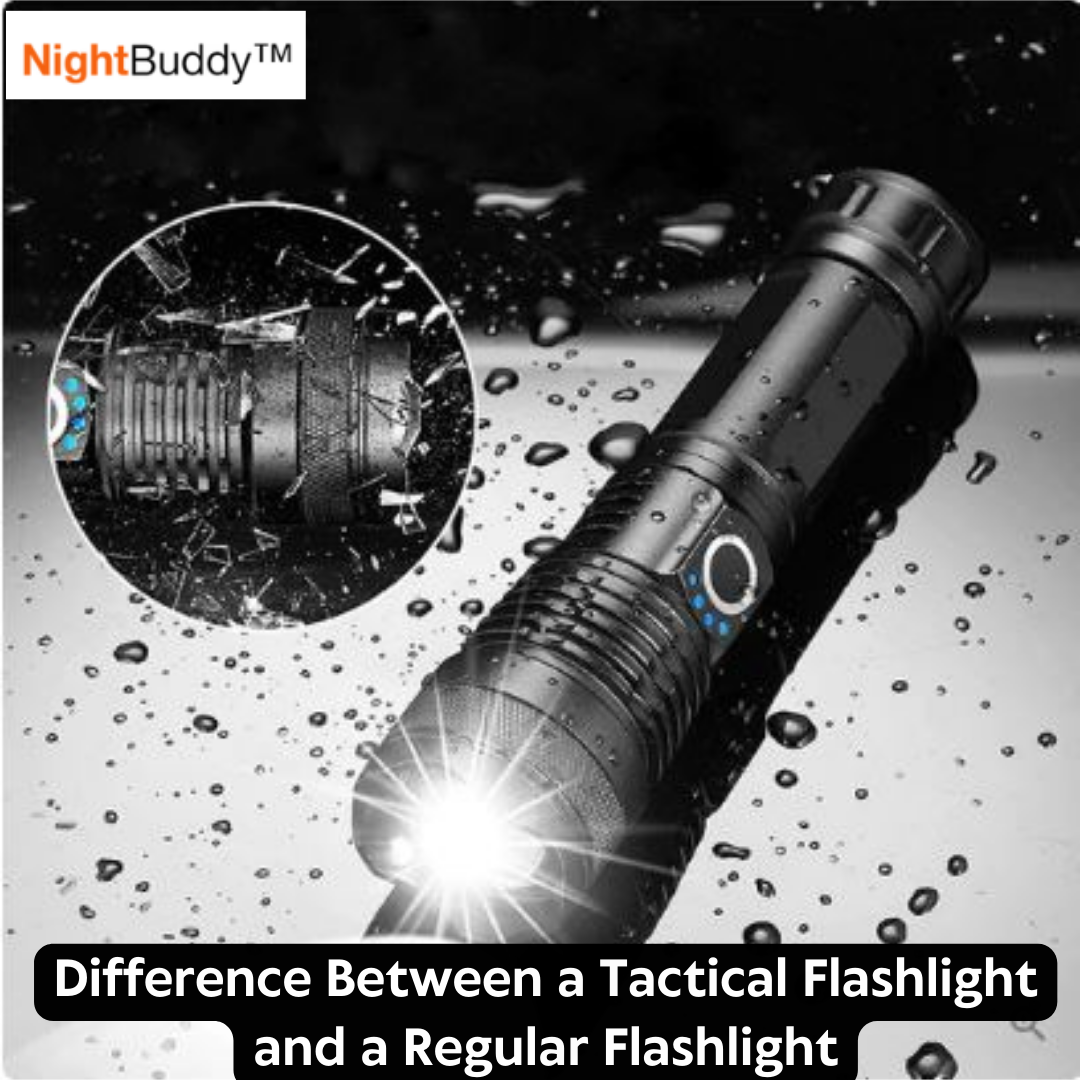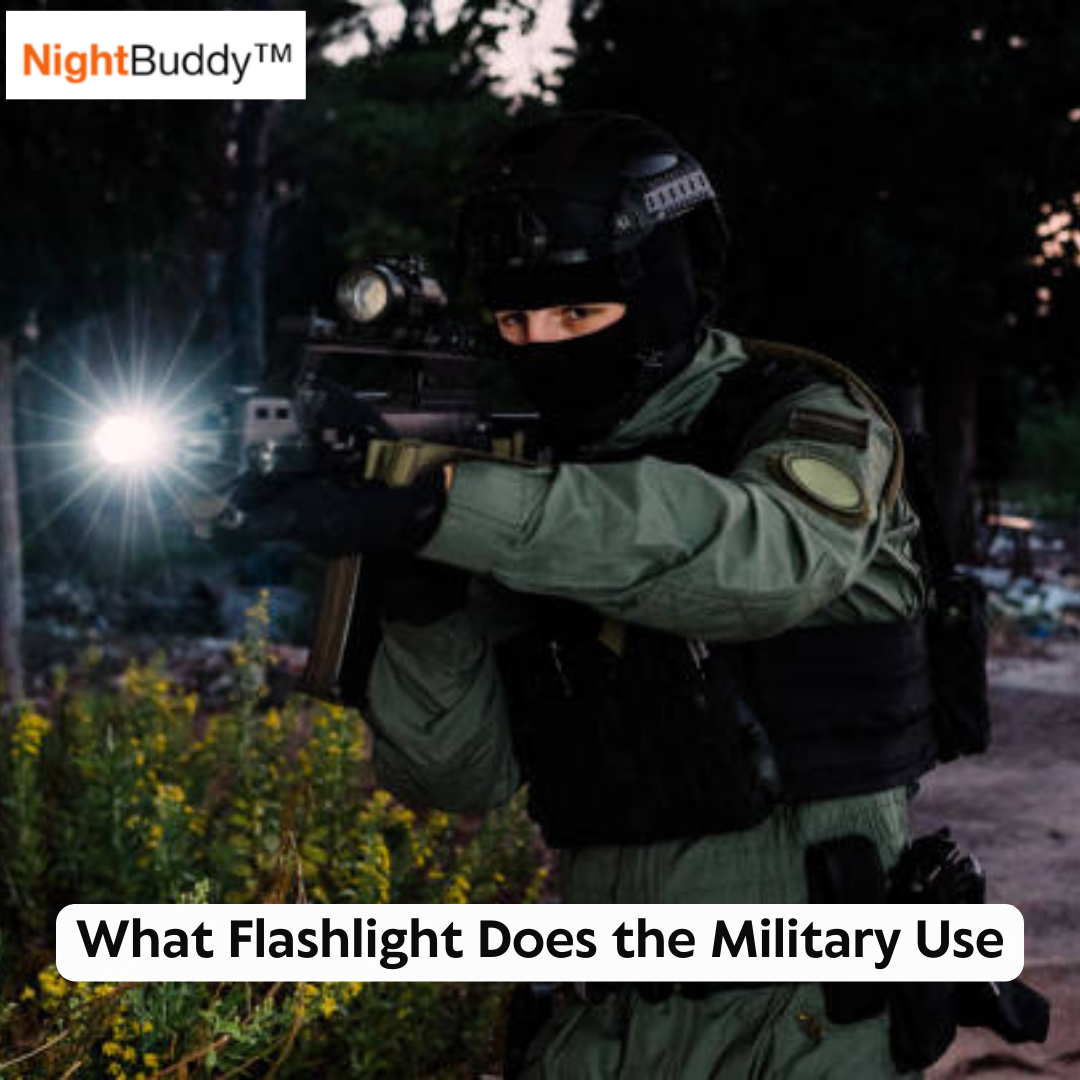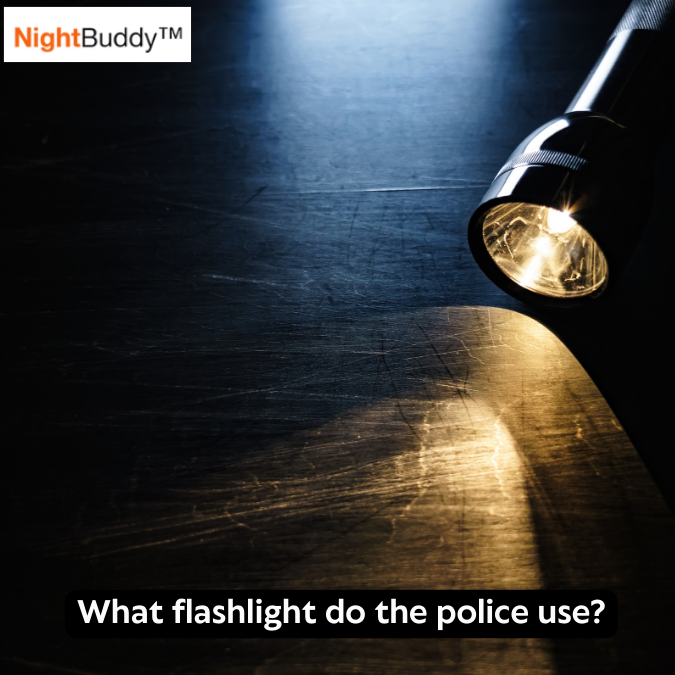Tactical Flashlight vs. Regular Flashlight: What's the Difference?
Flashlights are one of the most useful and versatile tools you can have, whether you're camping, hiking, or just trying to find something in a dark corner of your home. However, not all flashlights are created equal. In this article, we'll explore the key differences between tactical flashlights and regular flashlights.
Definition of Tactical Flashlight:

Tactical flashlights are designed for use by military personnel, law enforcement, and other professionals who require a reliable and durable light source in challenging environments. These flashlights are usually made from high-quality materials, such as aircraft-grade aluminum, and are built to withstand extreme weather conditions and rough handling.
Definition of Regular Flashlight:

Regular flashlights, on the other hand, are designed for general use by consumers. These flashlights are usually less expensive than tactical flashlights and are made from a variety of materials, including plastic and aluminum.
Notable Differences Between a Tactical Flashlight and a Regular Flashlight
Design Differences:
One of the key design differences between tactical and regular flashlights is the shape and size. Tactical flashlights are typically shorter and thicker than regular flashlights, which makes them easier to grip and more durable. Tactical flashlights also often feature a serrated or ridged bezel around the head of the flashlight, which can be used for self-defense.
Here are some of the key design differences between tactical flashlights and regular flashlights:
- Body and Construction: Tactical flashlights are typically designed with a rugged and durable body that is made of high-quality materials such as aircraft-grade aluminum or stainless steel. This is to ensure that the flashlight can withstand rough use and extreme conditions. Regular flashlights, on the other hand, may have a more lightweight and compact design, as they are intended for general-purpose use.
- Bezel: The bezel is the head of the flashlight that contains the lens and the LED emitter. Tactical flashlights often have a ridged or serrated bezel that can be used as a striking tool in self-defense situations. The ridges can be used to create pressure points and cause pain, while the serrations can be used to create deep cuts. Regular flashlights typically have a smooth bezel that is designed for general-purpose use.
- Switches and Modes: Tactical flashlights often have tactical switches for easy operation, which allow the user to turn the flashlight on and off quickly and easily with one hand. They may also have multiple modes such as high, low, strobe, and SOS modes for different lighting needs. Regular flashlights may have a simple push-button switch or a twist-operated switch for turning the flashlight on and off.
- Size and Weight: Tactical flashlights are often larger and heavier than regular flashlights, as they are designed to be used in more demanding situations. They may have a longer body or a wider head to accommodate the additional features and components. Regular flashlights, on the other hand, may have a more compact and lightweight design for easier portability and storage.
Brightness and Range:

Another major difference between these flashlights is their brightness and range. Tactical flashlights are usually much brighter than regular flashlights, with some models capable of producing over 1000 lumens.
They also typically have a longer range, with some models able to illuminate objects up to 500 meters away. This makes them ideal for use in low-light or no-light environments. Key differences in brightness and range between tactical flashlights and regular flashlights include:
- Brightness: Tactical flashlights typically have a higher lumen output than regular flashlights, which means they can provide a brighter and more focused beam of light. The high lumen output is important in tactical situations where visibility is critical, as it allows the user to see further and more clearly in low-light conditions. Some tactical flashlights can have lumen outputs of over 1000 lumens, while regular flashlights may have lower lumen outputs of 100-500 lumens.
- Range: The range of a flashlight refers to the distance that the beam of light can reach. Tactical flashlights often have a longer range than regular flashlights, as they are designed to be used in larger spaces and outdoor environments. A high-quality tactical flashlight can have a range of over 200 meters, while regular flashlights may have a range of around 100 meters.
- Beam Pattern: The beam pattern of a flashlight refers to the way in which the light is emitted from the flashlight. Tactical flashlights often have a more focused beam pattern, which means that the light is concentrated in a smaller area and can penetrate further into the darkness. Regular flashlights may have a broader beam pattern that is better suited for general-purpose use, as it can illuminate a wider area and provide a more even light distribution.
- Adjustability: Some tactical flashlights come with adjustable beam settings that allow the user to adjust the focus of the beam to suit their needs. This can be useful for situations where the user needs to switch quickly between a focused beam and a wider beam. Regular flashlights may not have this feature, as they are designed for more basic lighting needs.
Durability and Sturdiness:

Tactical flashlights are designed to be extremely durable and sturdy. They are often waterproof, shockproof, and can withstand extreme temperatures. Regular flashlights, on the other hand, may not be as durable and are often less resistant to impact and water damage.
Battery Life:
Tactical flashlights are usually powered by high-capacity batteries such as CR123A or 18650 rechargeable batteries. These batteries can provide longer run time and better performance compared to regular alkaline batteries that are commonly used in regular flashlights.
Modes and Features:
Tactical flashlights usually have multiple modes such as high, low, strobe, and SOS modes. Some models may also have features like zoom, memory function, and tactical switches for easy operation. Regular flashlights, on the other hand, may have limited modes and features.
Price:
Tactical flashlights are usually more expensive than regular flashlights due to their superior quality, features, and performance. However, the price of tactical flashlights can vary greatly depending on the brand, model, and features.
Intended Use:
Tactical flashlights are designed for professionals and enthusiasts who require a reliable and high-performance light source in extreme conditions. Regular flashlights are designed for everyday use by consumers who need a basic light source for various tasks.
Legal Restrictions:
In some countries, owning or carrying a tactical flashlight may be restricted or prohibited due to its potential use as a weapon. It's important to check the local laws and regulations before purchasing or carrying a tactical flashlight.
Uses of Tactical Flashlights

- Law Enforcement: Tactical flashlights are commonly used by law enforcement personnel such as police officers, detectives, and security guards. They can be used to illuminate dark areas, identify suspects, and provide a non-lethal force option.
- Military: Tactical flashlights are also used by military personnel in combat and training scenarios. They can be used to illuminate enemy positions, signal other soldiers, and navigate in low-light or no-light conditions.
- Outdoor Enthusiasts: Tactical flashlights are popular among hikers, campers, and hunters as they can provide a reliable and bright light source in remote or rugged environments.
- Self-Defense: The serrated or ridged bezel around the head of a tactical flashlight can be used as a striking tool in self-defense situations. The bright beam of light can also be used to temporarily blind an attacker and create an opportunity to escape.
- Emergency Preparedness: Tactical flashlights are an important part of any emergency preparedness kit. They can be used to signal for help, illuminate dark areas during power outages or natural disasters, and provide a reliable light source in emergency situations.
- Industrial and Construction: Tactical flashlights are also commonly used in industrial and construction settings where a bright and durable light source is required. They can be used to inspect machinery, illuminate work areas, and provide a reliable light source in hazardous environments.
Read more: What flashlight does the military use?
Uses of Regular Flashlights
- Household Tasks: Regular flashlights are useful for everyday tasks around the house such as finding lost items, fixing appliances, and performing repairs in dark areas.
- Camping: Regular flashlights are popular among campers as they can be used to navigate in the dark, set up tents, and prepare meals.
- Automotive: Regular flashlights are useful for automotive repairs such as inspecting engine compartments, changing tires, and diagnosing problems in low-light conditions.
- Emergency Kits: Regular flashlights are an important component of any emergency kit, as they can be used to signal for help, provide a reliable light source during power outages, and navigate in low-light conditions during emergencies.
- Children's Toys: Regular flashlights are often used as toys by children, as they can provide entertainment and encourage imaginative play.
- Photography: Regular flashlights can also be used as an improvised light source in photography, particularly for macro shots or to provide fill light.
How to Choose the Right Tactical Flashlight

Choosing the right tactical flashlight can be a challenging task given the numerous options available in the market. However, the following factors can help you narrow down your options and make an informed decision:
- Brightness: Look for a tactical flashlight with a high lumen output. A higher lumen output will provide a brighter beam of light that can illuminate a larger area and provide better visibility in low-light conditions.
- Durability: Choose a tactical flashlight that is made of high-quality materials such as aircraft-grade aluminum or stainless steel. Look for features such as shock resistance, waterproofing, and scratch resistance to ensure that the flashlight can withstand rough use and extreme conditions.
- Battery Life: Consider the battery life of the flashlight and the type of battery it uses. Choose a flashlight that has a long battery life and uses rechargeable batteries if possible.
- Size and Weight: Consider the size and weight of the flashlight and choose one that is comfortable to hold and easy to carry. A compact and lightweight flashlight is more convenient to carry and use than a larger and heavier one.
- Modes and Features: Look for a tactical flashlight that has multiple modes such as high, low, strobe, and SOS modes. Some models may also have features like zoom, memory function, and tactical switches for easy operation.
- Price: Consider the price of the flashlight and choose one that fits your budget while still providing the features and performance you need.
Types of Tactical Flashlights

Handheld Tactical Flashlights:
These flashlights are the most versatile type and can be used for a wide range of activities, such as outdoor adventures, law enforcement, security, and military operations.
They typically feature a rugged and durable design, high lumen output, and different modes (such as strobe, SOS, and low-power) that can be easily toggled using a tail or side switch. Some models also have a rechargeable battery or a USB port for convenient charging.
Weapon-Mounted Tactical Flashlights:
These flashlights are primarily used by law enforcement officers, military personnel, and gun enthusiasts. They are attached to a handgun or a rifle using a specialized mount and provide a bright and focused beam that helps to identify potential threats and targets.
Weapon-mounted flashlights often have a pressure switch that allows the user to activate the light with their non-trigger hand while keeping a firm grip on the firearm.
Headlamp Tactical Flashlights:
These flashlights are worn on the head using an elastic strap, which leaves both hands free for other activities. They are especially useful for outdoor activities like camping, hiking, and climbing, where the user needs to navigate in the dark while keeping their hands free.
Headlamp tactical flashlights are usually lightweight, comfortable to wear, and have adjustable straps and tiltable heads for customized illumination.
Penlight Tactical Flashlights:
These flashlights are compact, lightweight, and slim enough to fit in a pocket or a bag. They are useful for everyday carry and emergency situations like power outages, car breakdowns, or self-defense.
Penlight tactical flashlights typically have a pocket clip or a keychain ring for easy attachment, and some models even have a glass breaker or a self-defense bezel for added functionality.
Keychain Tactical Flashlights:
These flashlights are the smallest and most portable type of tactical flashlight. They are attached to a keychain, a zipper, or a backpack and provide a quick and convenient source of light. Keychain tactical flashlights are usually less bright than other types, but they make up for it with their compact size, easy accessibility, and long battery life.
Frequently Asked Questions
What should I look for in a tactical flashlight?
While looking for a good tactical flashlight, consider the following factors:
1. Brighter is best.
2. Water and drop resistant.
3. Ease of access to most needed modes such as turbo.
4. Any secondary outputs for extra versatility.
5. Proper size and feel for confident and smoother usage.
Why does my tactical flashlight get hot?
Overheating is normal for your flashlights, especially when its in turbo mode. The high level energy consumption causes it to get hot. Turbo modes commands LED luminous elements to convert more energy to visible light, hence the heat.
Can one overcharge a flashlight?
No! Overcharging may reduce the battery life of your flashlights. It is also recommended that nickel- and lithium-based batteries be stored with a 40% charge.





Leave a comment
This site is protected by hCaptcha and the hCaptcha Privacy Policy and Terms of Service apply.